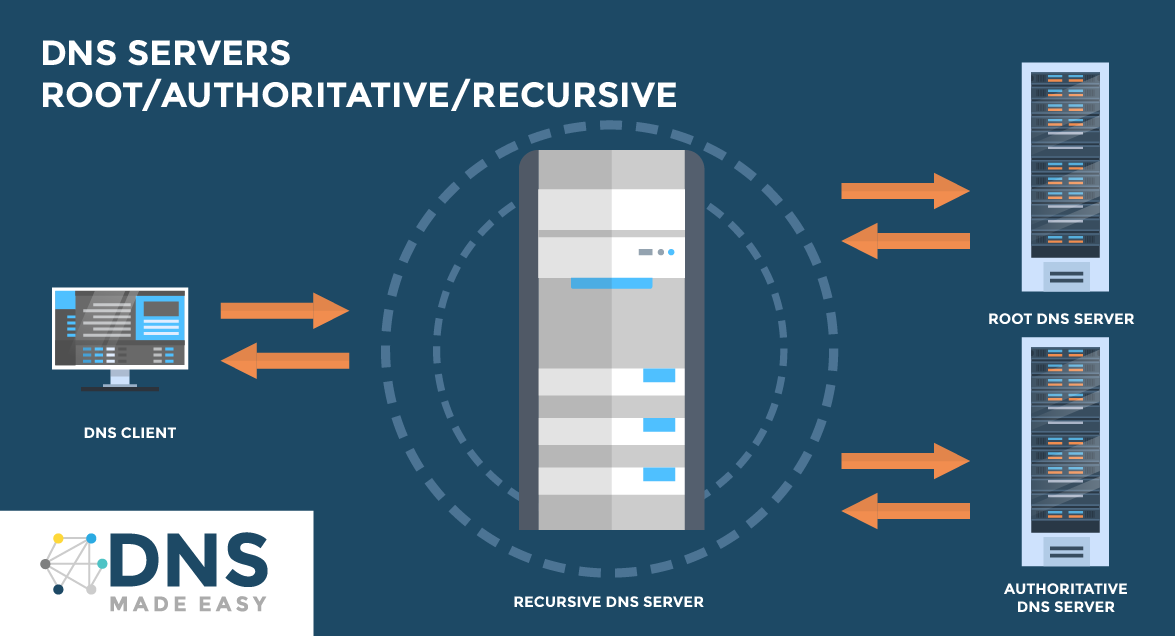Every time a person accesses the Internet and types an address or search term into their browser, they’re using DNS—whether they know it or not. The domain name system is constantly running behind the scenes and is the reason the Internet is what it is today.
Primary DNS
Primary DNS refers to the main authoritative nameserver for a domain. It’s this server that stores the IP address and other important details correlating with a specific website. A recursive resolver needs the information stored within the primary server to send internet users to the correct destination. While a query is typically resolved within milliseconds (depending on the DNS provider), it’s not a straight A to B process. Let’s take a look at how it works.
Primary DNS Server: How Does it Work?
Although it seems like it, once people search for something on the web, they aren’t magically transported to their online destination. A process occurs that is completely unnoticeable to end users—that is, unless something has gone awry.
The domain name system doesn’t just store DNS record information. It also translates domain names into a machine-readable format—numerical IP addresses. The primary DNS server for a domain is what provides the IP address. There are essentially eight steps in the DNS for a query that isn’t cached by a resolver:
- User’s browser (or device) contacts recursive nameserver
- Recursive nameserver contacts root server
- Root server refers recursive server to top-level domain (TLD) server
- Recursive server contacts TLD server
- TLD refers recursive server to an authoritative nameserver
- Recursive server contacts authoritative nameserver
- Authoritative nameserver provides final answer to recursive server
- Recursive server resolves query and directs browser (or device) to destination

The amazing thing about DNS is that these steps take only milliseconds in most cases. Each server in the process needs the other to work, but it’s the Primary DNS that answers the actual query request, hence the reason it’s called an authoritative nameserver.
Of course, there are exceptions to these steps. If one of the servers has the information for a domain in its cache, the resolver will answer the query with the cached details. Also, in rare cases, the process will repeat if an authoritative nameserver doesn’t provide a final answer.
DNS Server Not Responding
Of course, there are times when DNS can actually prevent a user from accessing a website or the internet as a whole. Anyone who frequents the web has likely experienced a “DNS server not responding” or similar error message when trying to access a website. These types of errors are usually a result of misconfigurations or network connectivity issues on the user’s end. However, this can also happen if an internet service provider (ISP) or a domain’s primary DNS provider has an outage with no redundancy measures.
Primary vs. Secondary DNS
While Primary DNS providers can’t do anything about user-related problems, they can do something to keep domains from experiencing DNS-related outages. This is where Secondary DNS comes in. While the primary DNS provider holds the main copy of a domain’s DNS records, the secondary provider holds a copy of the same data. This essentially means that a domain with secondary DNS would have two sets of authoritative DNS servers instead of just one. This way, if the primary provider has an outage, queries would automatically be directed to the secondary provider, with no noticeable effects for the end user.
A bonus to having a secondary DNS configuration is that resolvers learn which nameserver is faster. And, resolvers typically prefer the fastest resource. This is a win-win for your users as it provides them with an optimal experience.
Did you know?: DNS Made Easy has a 15+-year history of zero downtime—no one else in the industry can make that claim.
The TL;DR of Primary DNS
Regardless of how you access the internet, you use DNS. The internet wouldn’t be the same without it. Individuals access the web through recursive resolvers, typically that of an ISP or a free DNS platform such as Google or OpenDNS. Anyone who owns a domain, on the other hand, has primary DNS, which is an authoritative nameserver that holds the domain’s records and pertinent information. Without authoritative DNS, your website couldn’t be found online.
How DNS Made Easy Supports Primary DNS Reliability
DNS Made Easy is built to keep your domain online, fast, and fully resolvable—no matter what. With a 15+ year track record of zero downtime, our network ensures that your Primary DNS is always available and performing at the highest level. Our platform is engineered with automatic failover, real-time monitoring, and support for Secondary DNS configurations to add redundancy and speed. Whether managing one domain or thousands, DNS Made Easy gives you the reliability, performance, and control your online presence depends on.
